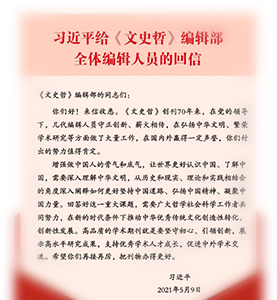杨朱学派:百家争鸣的启动者——兼论《庄子》若干篇目的年代问题
张 浩
摘要:由于古今视角的不同,今人对历史现象的认识往往存在偏差,从同期文献等客观性证据出发,考证杨朱学派的兴衰史,可以证明杨朱学派曾经是国内最重要的学术流派之一,伴随杨派的繁荣,还开启了百家争鸣的序幕,在短暂的辉煌之后,到战国末期,杨朱学派已渐没落。循着相关文献之间出现的矛盾,还可以发现之所以《庄子》中既有“杨墨”,又有“儒墨”,是因为存在写作年代上的先后,《庄子》之《胠箧》等篇并非晚出的作品,反而可能是《庄子》中最早的篇目,甚至可能是庄子的成名之作。
The Yang Zhu School: A Starter for the Contention and Flourishing of Various Schools of Thought with a Discussion of the Times of Several Chapters of Zhuangzi
Zhang Hao
Abstract: People today often hold bias in understanding historical phenomenon due to the difference between ancient and modern perspectives. Through textual research of the rise and fall of the Yang Zhu School from the objective evidences such as the literature over that period, it can be proved that the school had once been one of the most influential schools of thought in China. The flourishing of the school also opened the prologue of the contention of various schools of thought. After a brief resplendence, the Yang Zhu School had been in decline during the late Warring States period. Following the contradiction among relevant literature, we can also find that the reason why there appeared “Yang Zhu and Mozi” and “Confucianism and Mohism” in Zhuangzi lied in the sequence of forming times. The chapter “Cutting Open Satchels (Qu Qie)” and some others are not the writings of later periods; instead, they are likely to be the earliest chapters of the book, and even the masterpieces of Zhuangzi.


